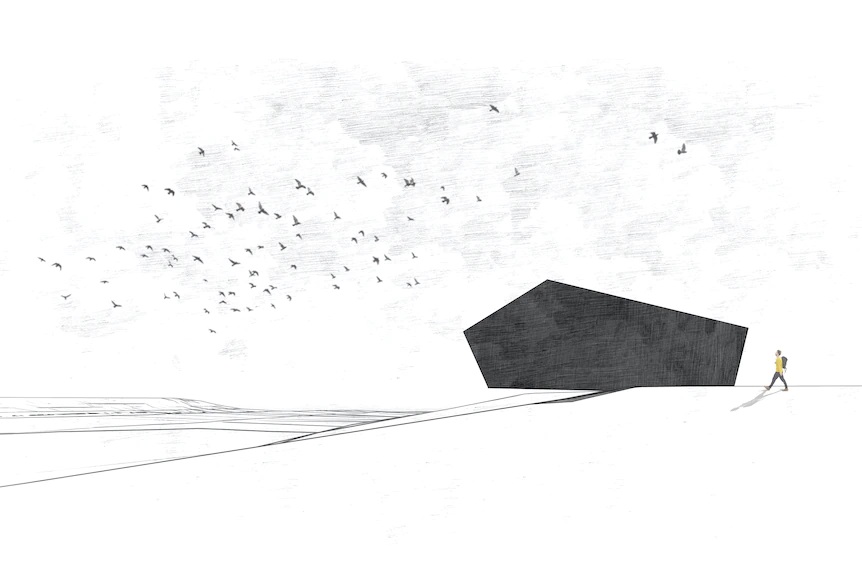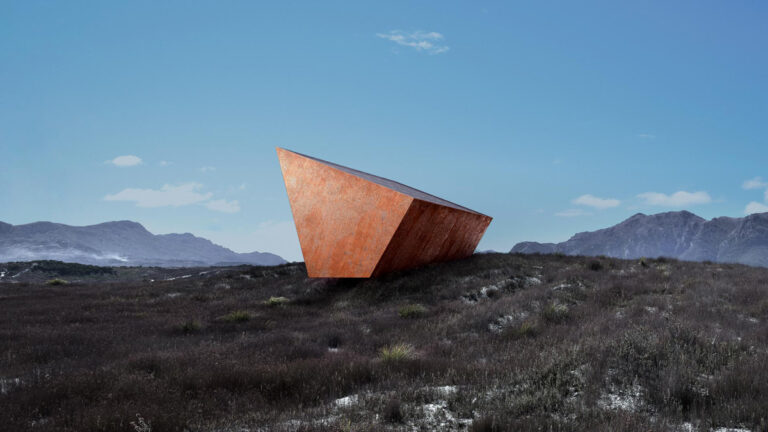Earth is getting a black box to record doomsday for future civilisations
Where do you see yourself ten years down the line? “Happy, doing what I love—potentially with a family I’ve built with my partner,” was a no-brainer, 2012-esque answer to that question. Nine years later, we’ve realised (well, some of us have) that there are consequences to our own actions and that our happy-go-lucky forecasts were rather selfish. At a time when we’re torn between Musk and Bezos’ doomsday plans for the future, a new project is already bracing for the impact of climate change and other human-made perils.
Enter ‘Earth’s Black Box’, a giant installation backed with the aim of recording every step we take towards climate catastrophe—thereby providing a permanent record of our mistakes for future civilisations to uncover and learn from.
What is Earth’s Black Box exactly?
Made of three-inch-thick steel and cantilevered off granite, Earth’s Black Box is a giant monolith set to be built on a granite-strewn plain on Tasmania’s west coast. Beating Malta, Norway and Qatar for its geopolitical and geological stability, the island state of Australia will host information related to climate change, species extinction, environmental pollution and their eventual impact on health—similar to how black boxes record cars and flights in case of accidents and emergencies.
The structure, a collaboration between Clemenger BBDO, researchers at the University of Tasmania and artistic collective The Glue Society, will be embedded with storage drives and internet connectivity—all powered by solar panels placed on its roof. Housing batteries to provide backup power storage, an algorithm will be downloading and preserving a stream of real-time scientific updates and analysis surrounding climate catastrophe from the internet. Yes, even your doomer tweets—and potentially, this article itself—will be documented in the black box for the future to read.

“The idea is if the Earth does crash as a result of climate change, this indestructible recording device will be there for whoever’s left to learn from that,” Jim Curtis, the Executive Creative Director of Clemenger BBDO, told the Australian Broadcasting Corporation (ABC). According to him, the project is non-commercial with the guiding design principle of functionality. “Obviously it’s really a powerful concept when you say to someone, ‘Earth’s got a black box’. Because they’re like, ‘Why does it need a black box?’,” Curtis continued. “But first and foremost, it’s a tool.”
This tool, as noted by Jonathan Kneebone, co-founder of The Glue Society, is built to outlive us all. “If the worst does happen, just because the power grids go down, this thing will still be there,” he told ABC. The national broadcaster also added how the structure will be collecting two types of data:
1. Measurements of land and sea temperatures, ocean acidification, atmospheric CO2, species extinction, land-use changes, as well as things like human population, military spending and energy consumption.
2. Contextual data such as newspaper headlines, social media posts and news from key events like Conference of the Parties (COP) climate change meetings.
Upon a quick scroll through the project’s website, you’ll see a ‘recording’ button flashing in the top right corner. Although the construction of the box is still underway, the hard drives set to be placed inside the structure have already begun recording—starting with the COP26 climate conference held in Glasgow this year.
“The black box will record backwards, as well as forwards in time, to document how we got to where we are—pulling any available historical climate change data off the internet,” ABC noted, adding how the developers estimate there will be enough capacity to store data for the next 30 to 50 years with compression and archiving. Meanwhile, researchers are also investigating ways to expand this alleged capacity with effective long-term storage methods, including the inscription of steel plates. “This will enable us to be far more efficient with how each tier of storage is used and make it possible to store data for hundreds, if not thousands of years,” the team said.

What if someone does find it in the future?
Let’s imagine the worst has happened and another civilisation stumbles across the then-rusted structure. Now what? “It is impossible to anticipate who or what will find [it],” the developers explained. “But it can be assumed that it will not be of any use unless it is discovered by someone or something… with the capability of understanding and interpreting basic symbolism.” In short, breaking into the box’s interior—given its three-inch-thick steel casing—will already require some ingenuity. Whoever and whatever can pass that phase would undoubtedly be able to interpret basic symbols.
“Like the Rosetta Stone, we would look to use multiple formats of encoding,” the developers continued, outlining their explorations of including an electronic reader that stays within the box and will be activated upon exposure to sunlight. This could also potentially reactivate the structure “if it has entered a long-term dormant state as a result of catastrophe.”
The mission backing the project doesn’t end there. Once the black box is up and running, the compiled data bank will be accessible via a digital platform. “The plan is that people will also be able to connect wirelessly with it if they’re to visit the site,” ABC added. As of today, the project’s website has a dedicated section where one can view the information, articles and tweets the black box has already picked up in real-time. “There are other features we are playing with such as transmitting summary stats in longer intervals into space, and having [a] ‘heartbeat’ which communicates that the box is on and actively recording to on-site visitors,” the developers noted.
Apart from serving as a potential information bank—and ultimate proof of our existence—the project is therefore seeking to issue a sense of urgency about climate change. “It’s also there to hold leaders to account,” Curtis mentioned. “To make sure their action or inaction is recorded.” So even if Twitter jumps and labels this piece of innovation as a publicity stunt, it does not deny the fact that the structure has the potential of inspiring action with accountability for future generations.
“How the story ends is completely up to us,” its website reads. “Only one thing is certain: your actions, inactions and interactions are now being recorded.”





